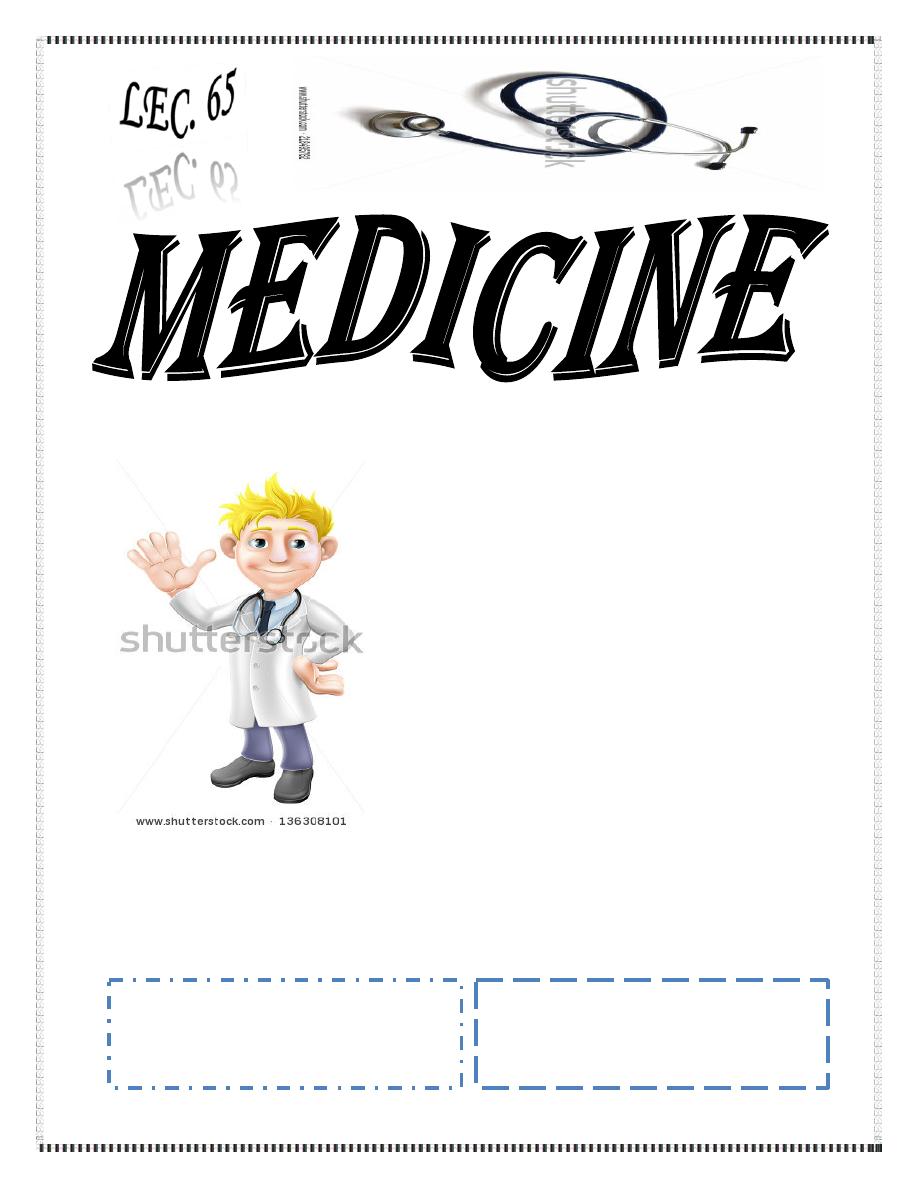
Dr. Manal
Lec. 2
ADRENAL GLAND
Mon. 14 / 3 / 2016
Done By: Ibraheem Kais
2015 – 2016
ﻣﻜﺘﺐ ﺁ
ﺷﻮﺭ ﻟﻼﺳﺘﻨﺴﺎﺥ
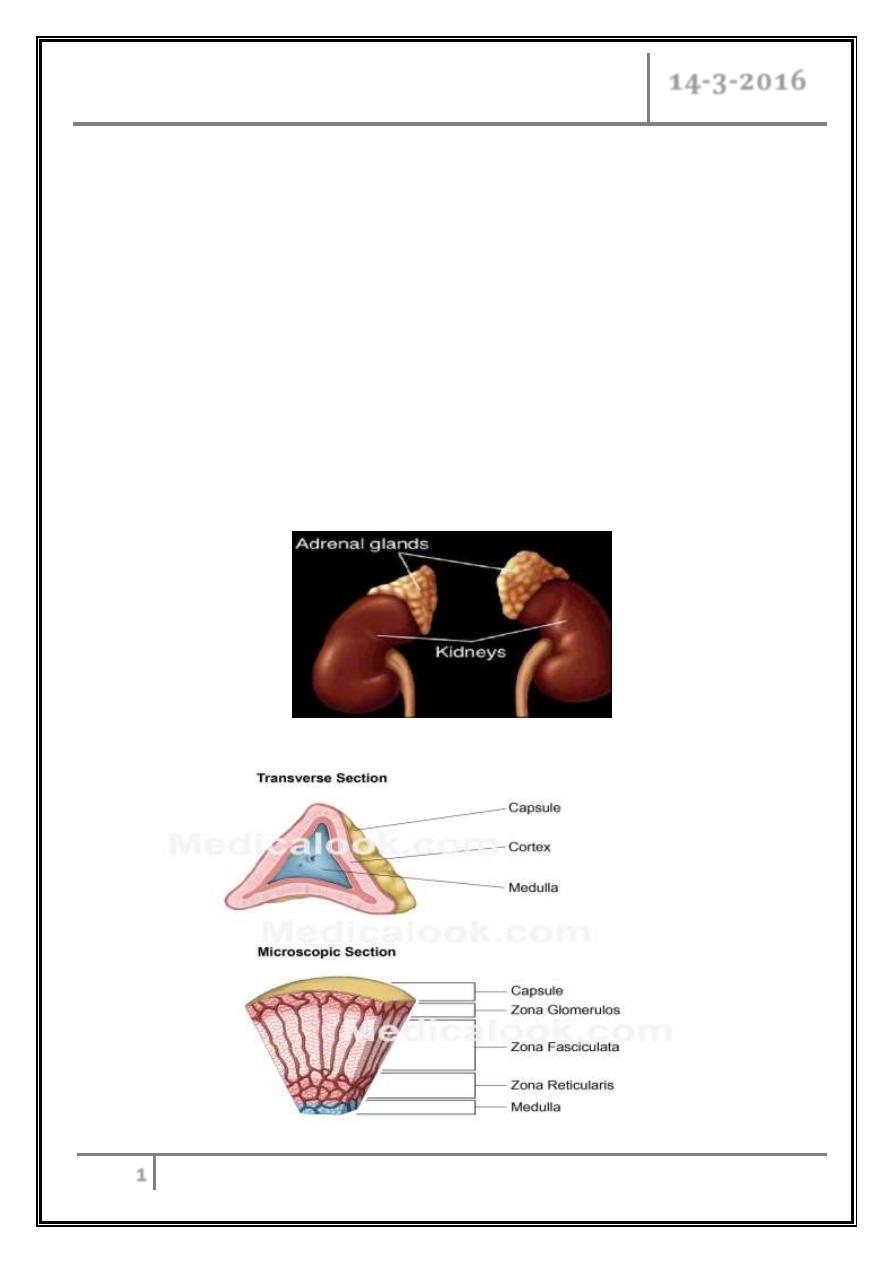
Adrenal gland Dr. Manal
14-3-2016
1
Adrenal gland
Objectives
At the end of this lecture, the student should be able to:
Describe the physiology of adrenal hormones secretion.
Determine the synthesis of adrenal hormones.
Recognize the functions of the adrenal hormones.
State the pharmacological actions and therapeutic principles of corticosteroids.
Identify the side effects of steroid abuse.
State the importance of steroid tapering after prolonged use.
About 5x3 cm in size, combined weight in an adult human ranges from 7 to 10 grams.
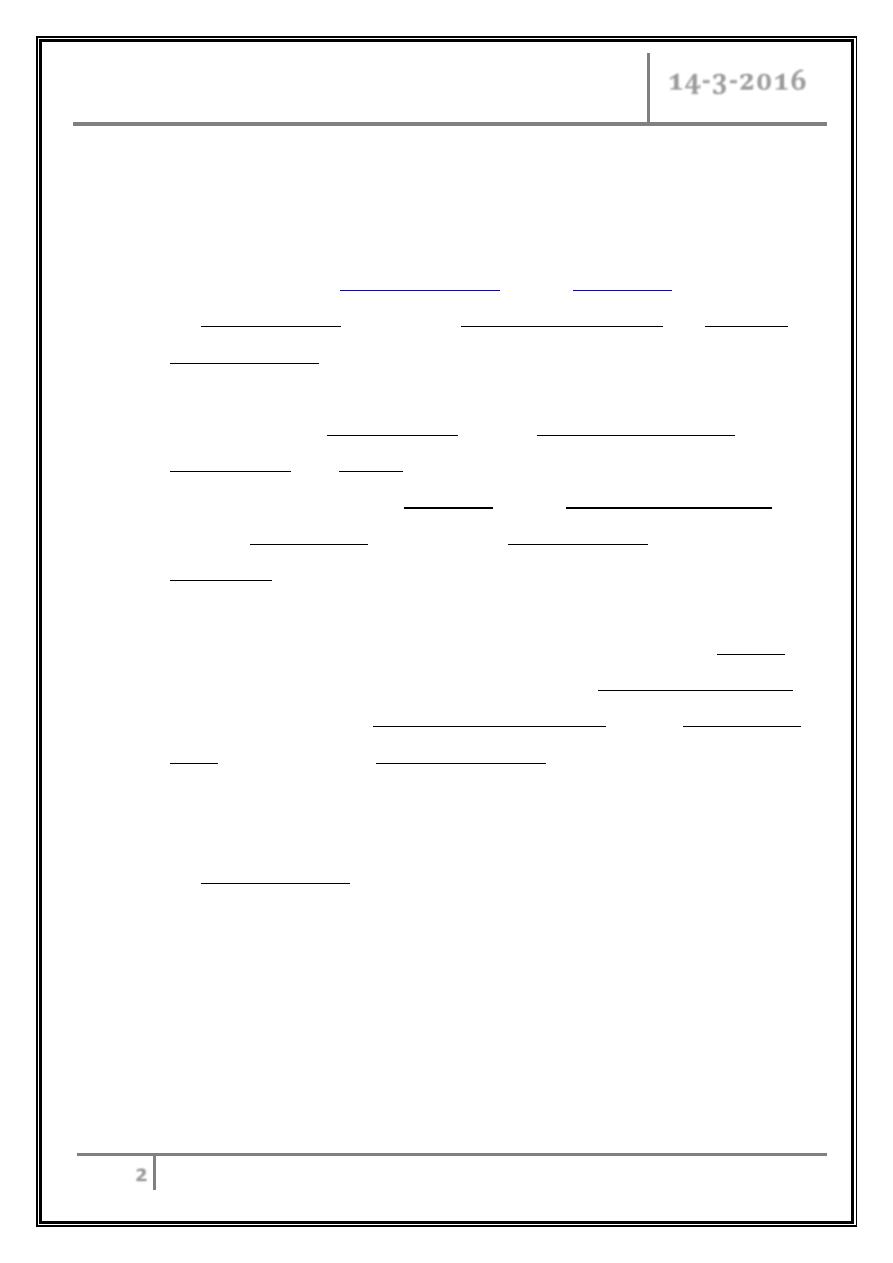
Adrenal gland Dr. Manal
14-3-2016
2
Anatomy and Function
Capsule.
Cortex (outer) has 3 zones:
, responsible for
the regulation of BP. It affects the distal convoluted tubule and collecting
duct of the kidney. (Increased reabsorption of Na
+
and excretion of both K
+
and H
+
ions).
2. Zona fasciculata: glucocorticoids, such as 11-deoxycorticosterone,
3. Zona reticularis: produces androgens, mainly dehydroepiandrosterone
(DHEA), DHEA sulfate (DHEA-S), and androstenedione (the precursor to
testosterone) in humans.
Medulla (core of the gland).
- It secretes norepinephrine and epinephrine. Catecholamines (aa tyrosine ),
water-soluble, the major hormones underlying the fight-or-flight response.
- Receives input from the sympathetic nervous system through preganglionic
fibers originating in the thoracic spinal cord from T5–T11.
- Cortisol also promotes epinephrine synthesis.
History
1855 – Addison's disease.
1856 – Adrenal glands essential for life.
1930 – Cortex > medulla.
1932 – Cushing’s syndrome.
1949 – Steroids in rheumatoid arthritis.
1952 – Aldosterone.
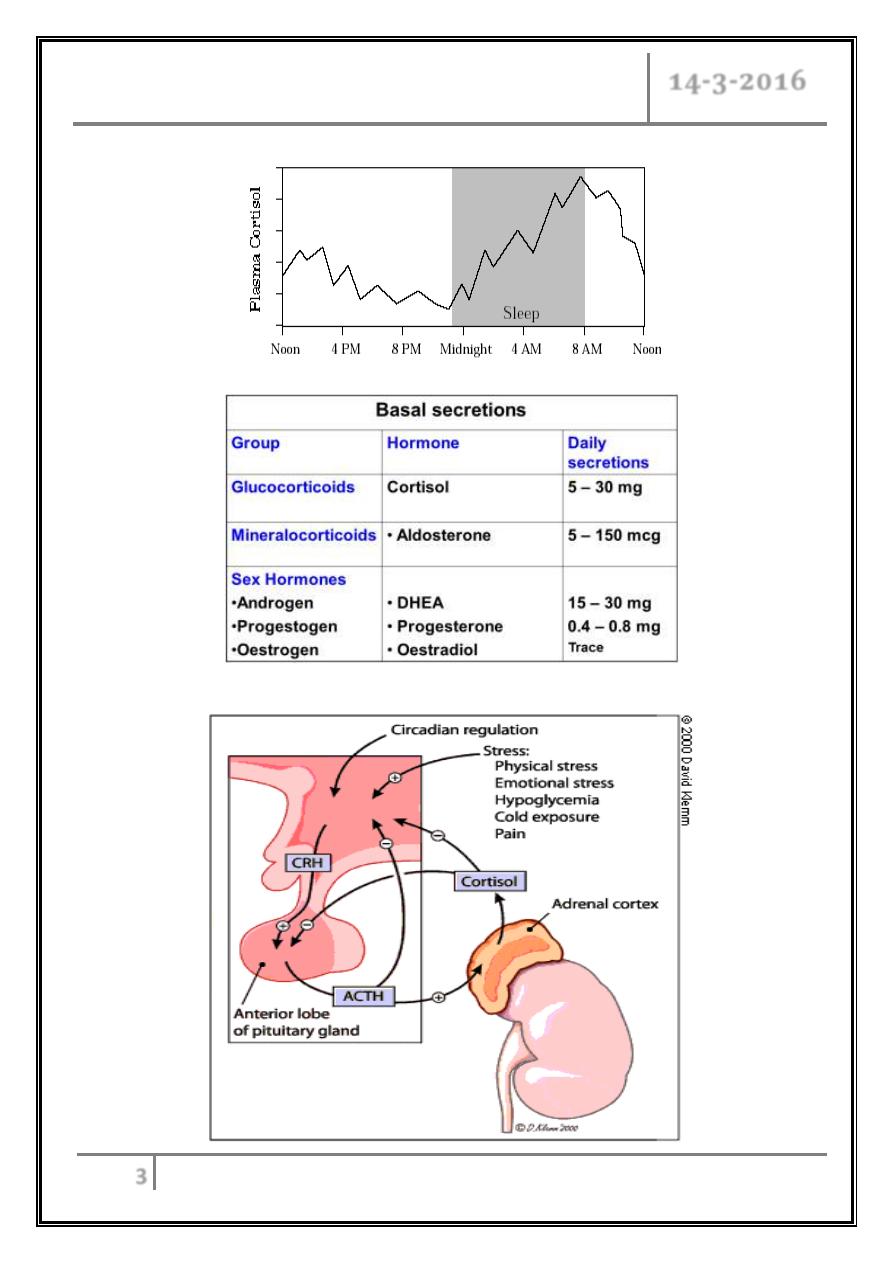
Adrenal gland Dr. Manal
14-3-2016
3
From Essential of Pharmacotherapeutics, ed. FSK Barar. P.351
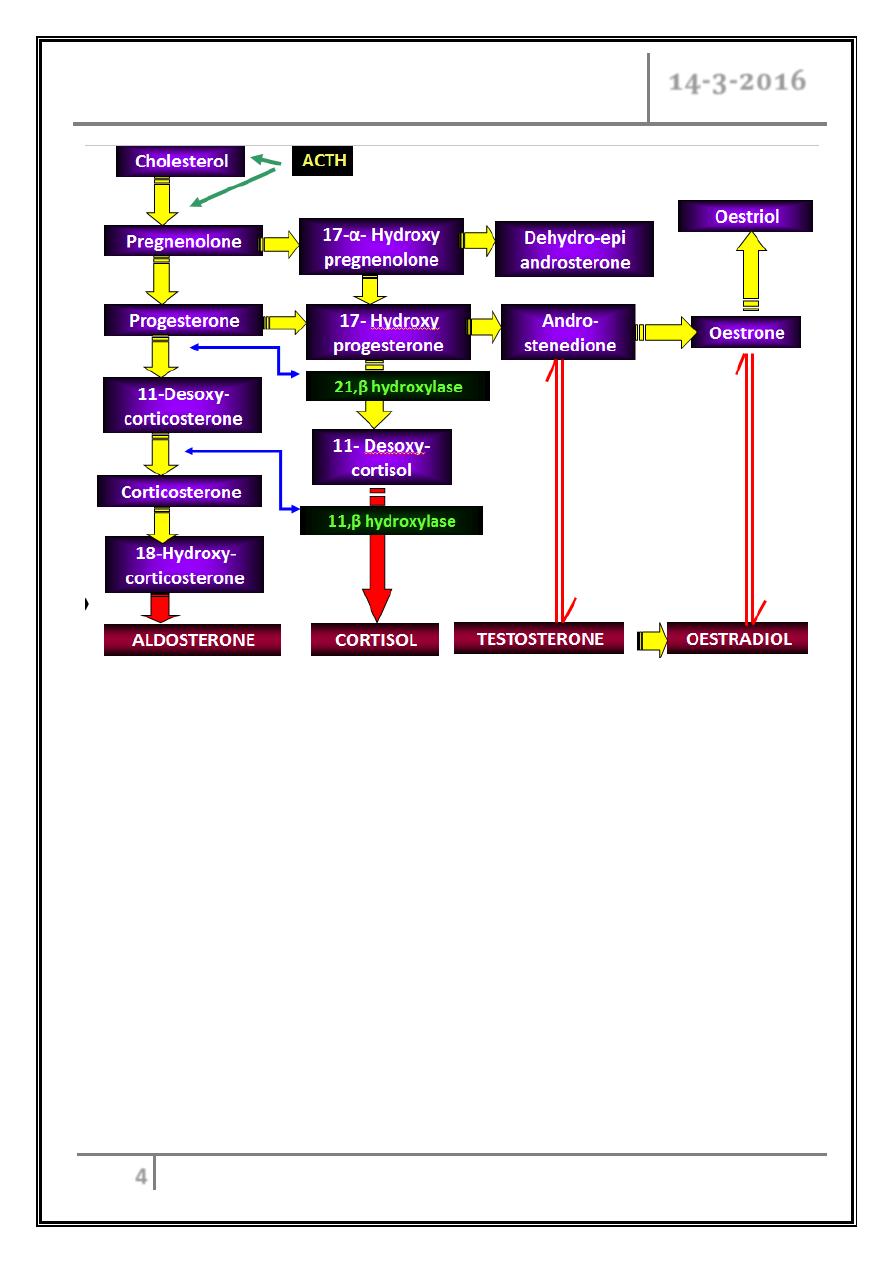
Adrenal gland Dr. Manal
14-3-2016
4
Pharmacological Actions
1- Carbohydrate.
2- Protein.
3- Lipid.
4- Electrolyte & water.
5- CVS.
6- Skeletal muscle.
7- CNS.
8- Stomach.
9- Blood.
10- Anti-inflammatory.
11- Immunosuppressant.
12- Respiratory system.
13- Growth & cell division.
14- Calcium metabolism.
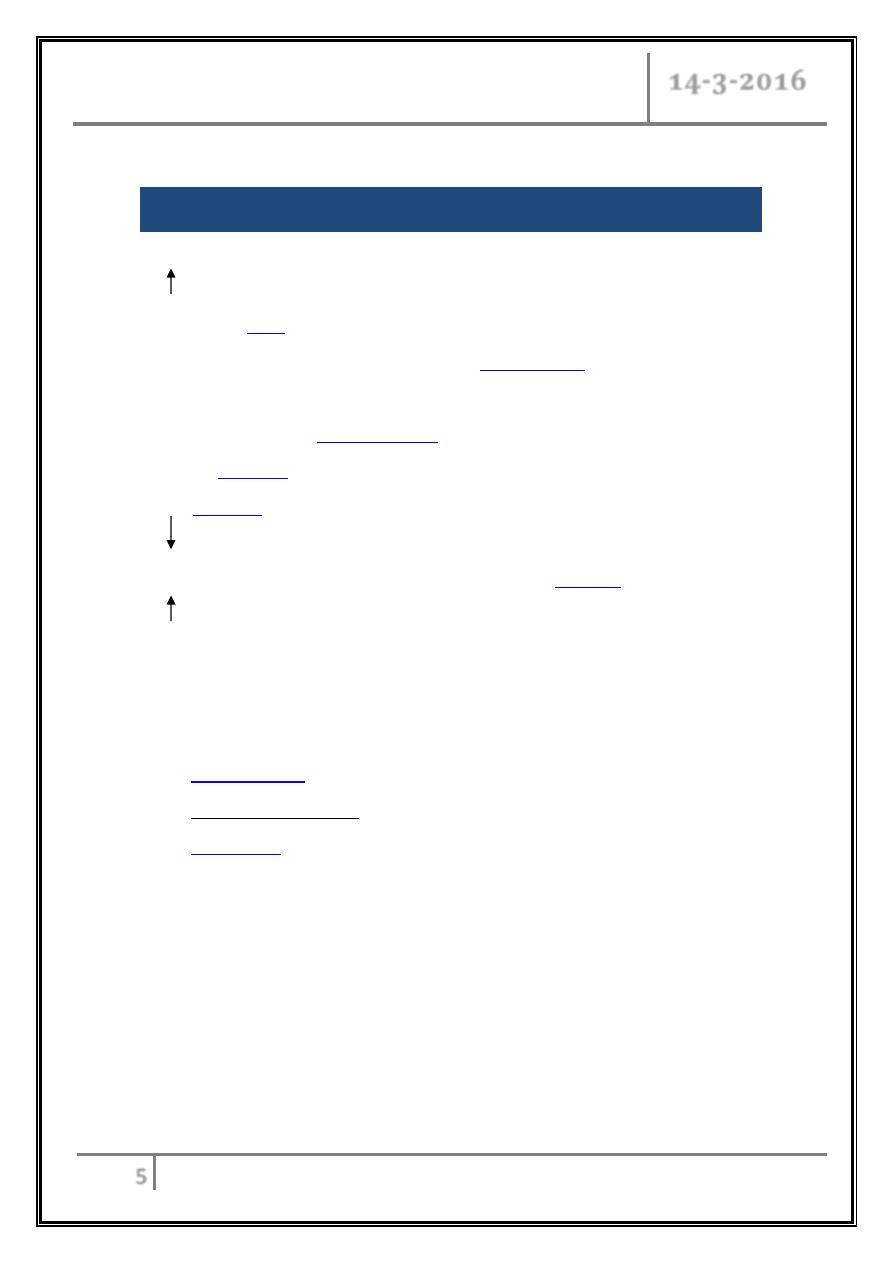
Adrenal gland Dr. Manal
14-3-2016
5
Carbohydrate and protein metabolism
Gluconeogenesis
(synthesis of glucose from aa and glycerol).
- Mobilization of amino acids from
gluconeogenesis.
in adipose tissue: The fatty acids released
are used for production of energy and the released
provides another substrate for gluconeogenesis.
Peripheral utilization of glucose
- Inhibition of glucose uptake in muscle and
Glycogen deposition in liver
- Activation of hepatic glycogen synthase.
Lipid metabolism
Redistribution of fat
-
- Supraclavicular fat.
-
Promote adipokinetic agents activity (glucagon, growth hormone,
adrenaline, and thyroxin).
Negative nitrogen balance & hyperglycemia
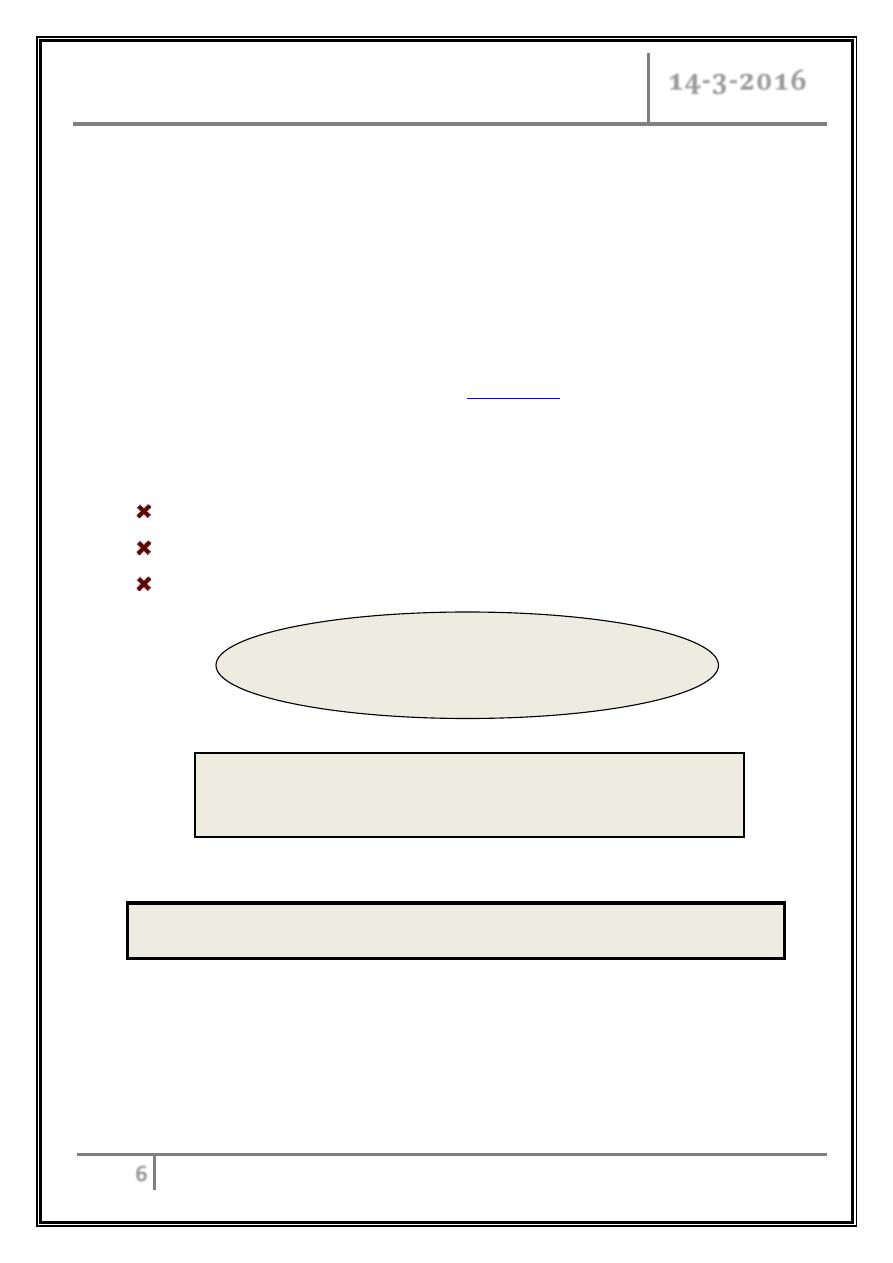
Adrenal gland Dr. Manal
14-3-2016
6
Electrolyte and water balance
o Aldosterone is more important, acts on D.T. & C.D. of kidney.
- Na
+
reabsorption.
- Urinary excretion of K
+
and H
+
.
-
Glucocorticoids assist in the normalization of extracellular fluid volume
by regulating body’s action to atrial natriureteric peptide.
- Cortisol reduces the capacity of
and decreases the absorption of calcium in the GIT.
Cardiovascular system
Restrict capillary permeability.
Maintain tone of arterioles.
Myocardial contractility.
Skeletal muscles
Addison's disease: weakness & fatigue is due to inadequacy of circulatory
system.
Prolonged use: steroid myopathy, weakness, reduced muscle mass and
repair
Mineralocorticoids induced
hypertension
Na
+
sensitizes blood vessels to the action of
catecholamines & angiotensin
Needed for maintaining the normal function of Sk. muscle
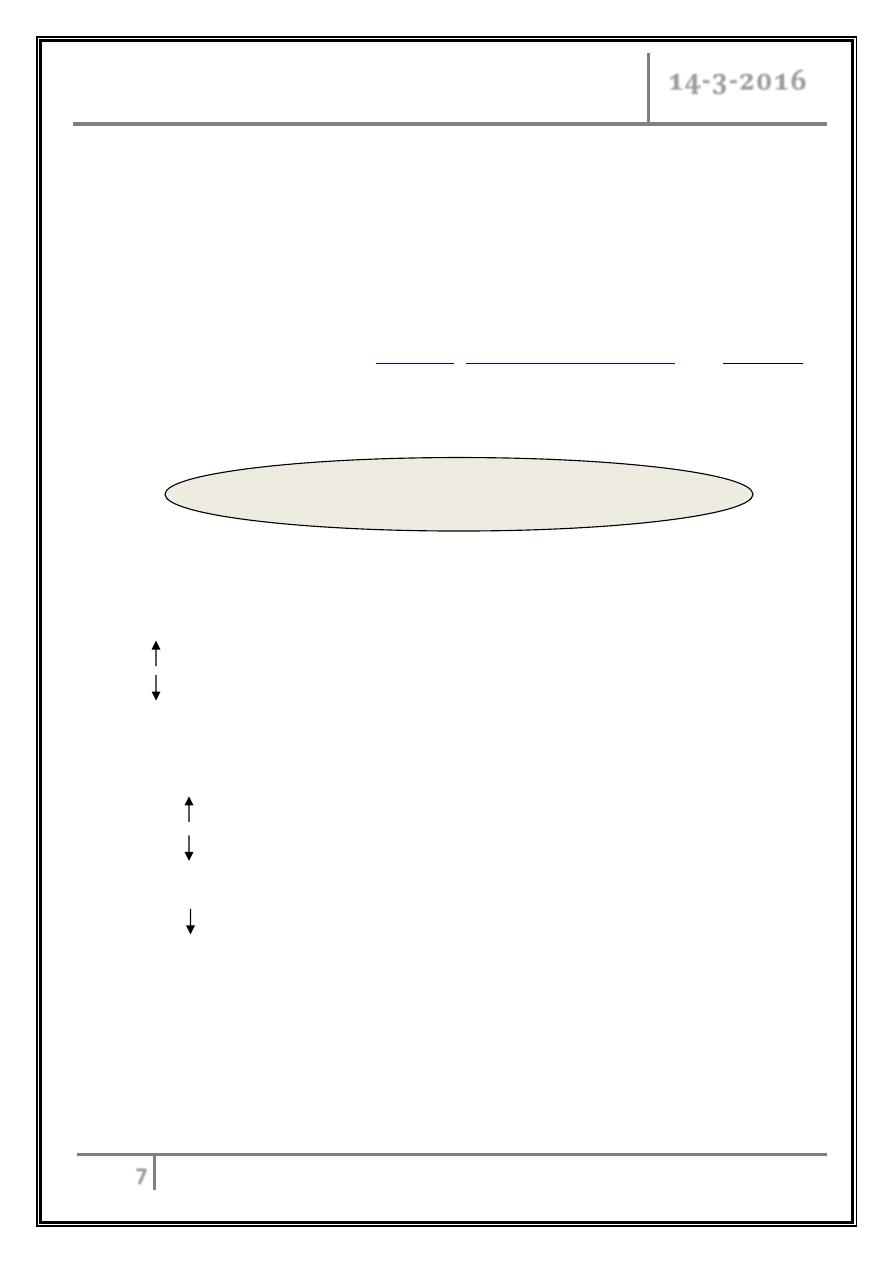
Adrenal gland Dr. Manal
14-3-2016
7
CNS
Direct:
- Mood (euphoria).
- Behavior, psychosis.
- Brain excitability.
) and cognition
(memory).
Indirect.
Stomach
Aggravates peptic ulcer. May be due to:
- Acid & pepsin secretion.
- Immune response to H.Pylori.
Blood
RBC:
- Hb & RBC content.
- Erythrophagocytosis.
WBC:
- Lymphocytes, eosinophils, monocytes, and basophils (except neutrophils).
ICP (pseudotumor cerebri)
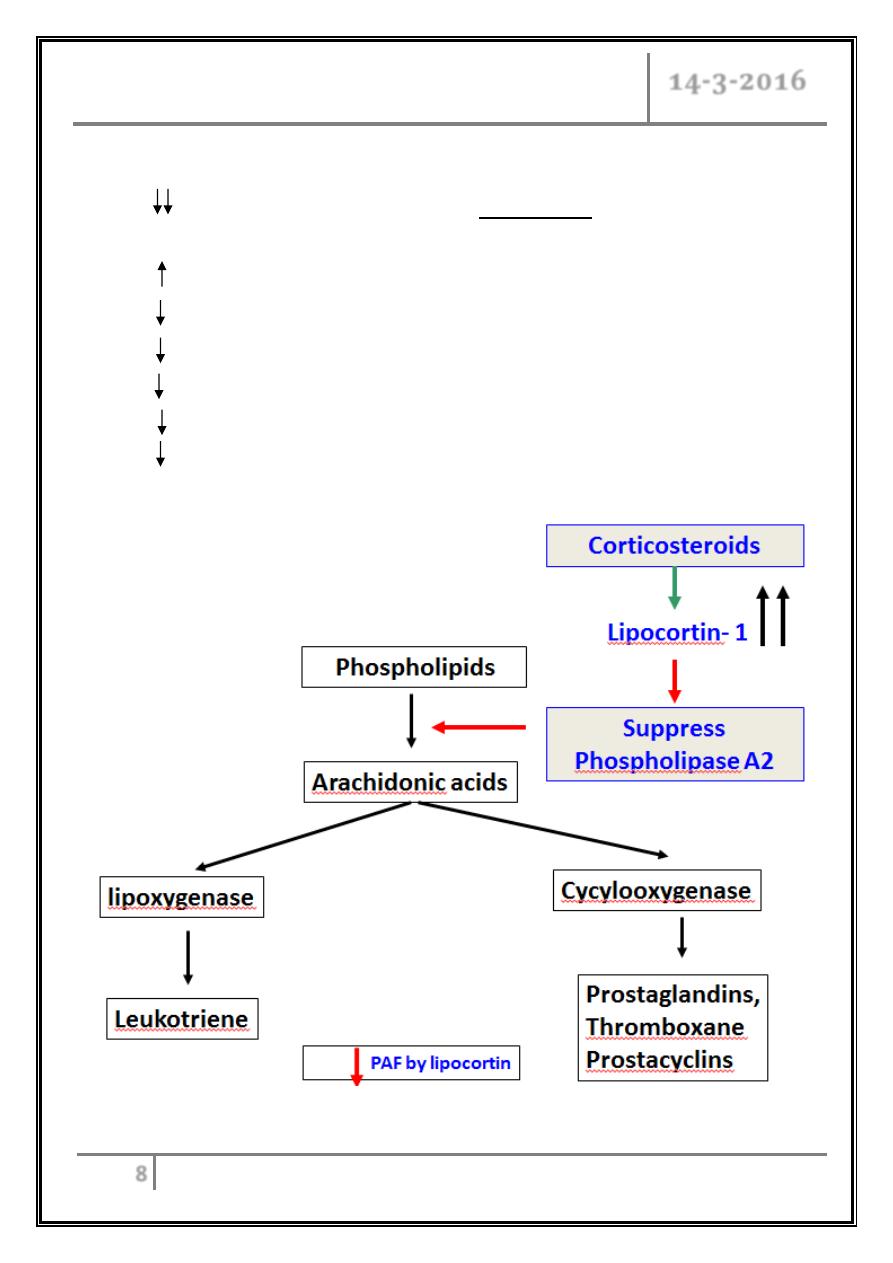
Adrenal gland Dr. Manal
14-3-2016
8
Anti-inflammatory
Recruitment of WBC & monocyte- macrophage into affected area &
elaboration of chemotactic substances.
Lipocortin.
TNF from phagocytic cells.
IL1 from monocyte-macrophage.
Formation of plasminogen activator.
Fibroblastic activity.
Expression of cyclooxygenase II.
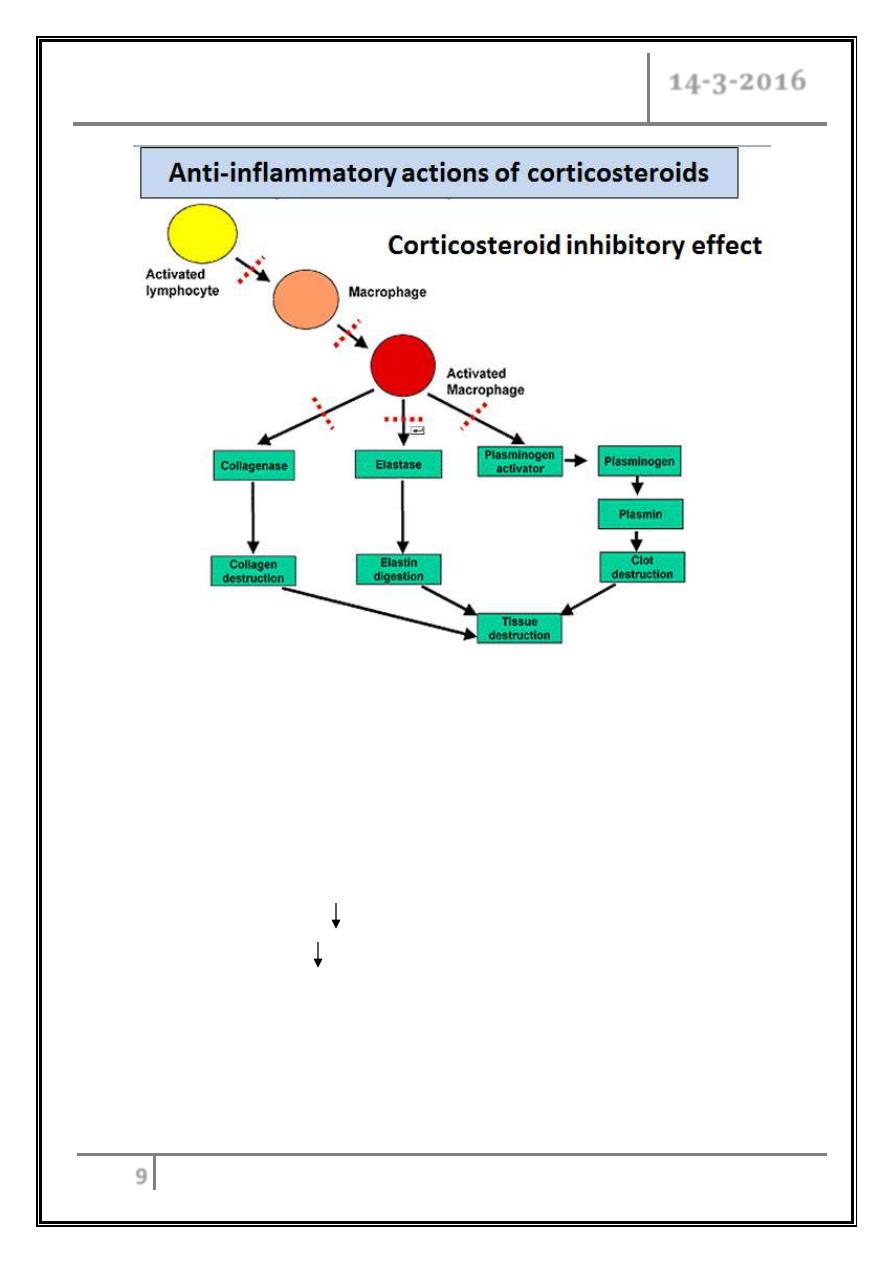
Adrenal gland Dr. Manal
14-3-2016
9
Immunosuppressive & anti-allergic actions
Suppresses all types of hypersensitivity & allergic phenomenon.
At high dose: interfere with all steps of immunological response.
Causes greater suppression of CMI (graft rejection & delayed
hypersensitivity).
Transplant rejection: antigen expression from grafted tissues, delay
revascularization, sensitization of T-lymphocytes.
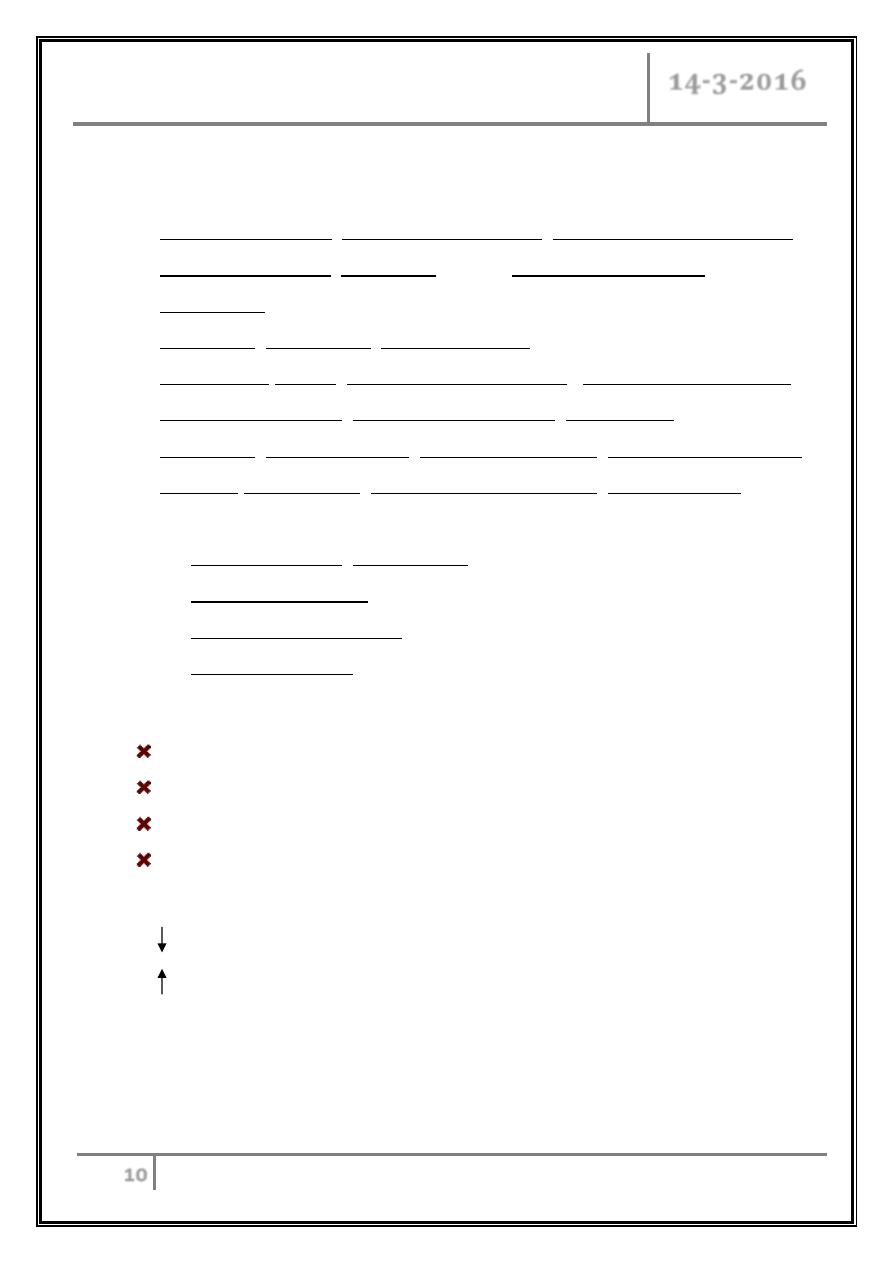
Adrenal gland Dr. Manal
14-3-2016
10
Main pathogens of concern in glucocorticoid-induced
immunodeficiency:
o Legionella micdadei, Listeria monocytogenes, Mycobacterium tuberculosis,
Nocardia asteroides, Salmonella species, Staphylococcus aureus,
o Aspergillus, Blastomyces, Candida albicans and nonalbicans species,
Coccidioides immitis, Cryptococcus neoformans , Histoplasma capsulatum.
Penicillium marneffei, Pseudallescheria boydii, Zygomycosis
o Adenovirus, Cytomegalovirus, Herpes simplex virus, Human papillomavirus,
Influenza/parainfluenza, Respiratory syncytial virus, Varicella zoster.
o Others
- Cryptosporidiosis/ lsospora belli.
Growth and cell division
Inhibit cell division or synthesis of DNA.
Delay the process of healing.
Retard the growth of children.
Delay puberty.
Calcium metabolism
Intestinal absorption.
Renal excretion.
Excessive loss of calcium from spongy bones (e.g., vertebrae, ribs).
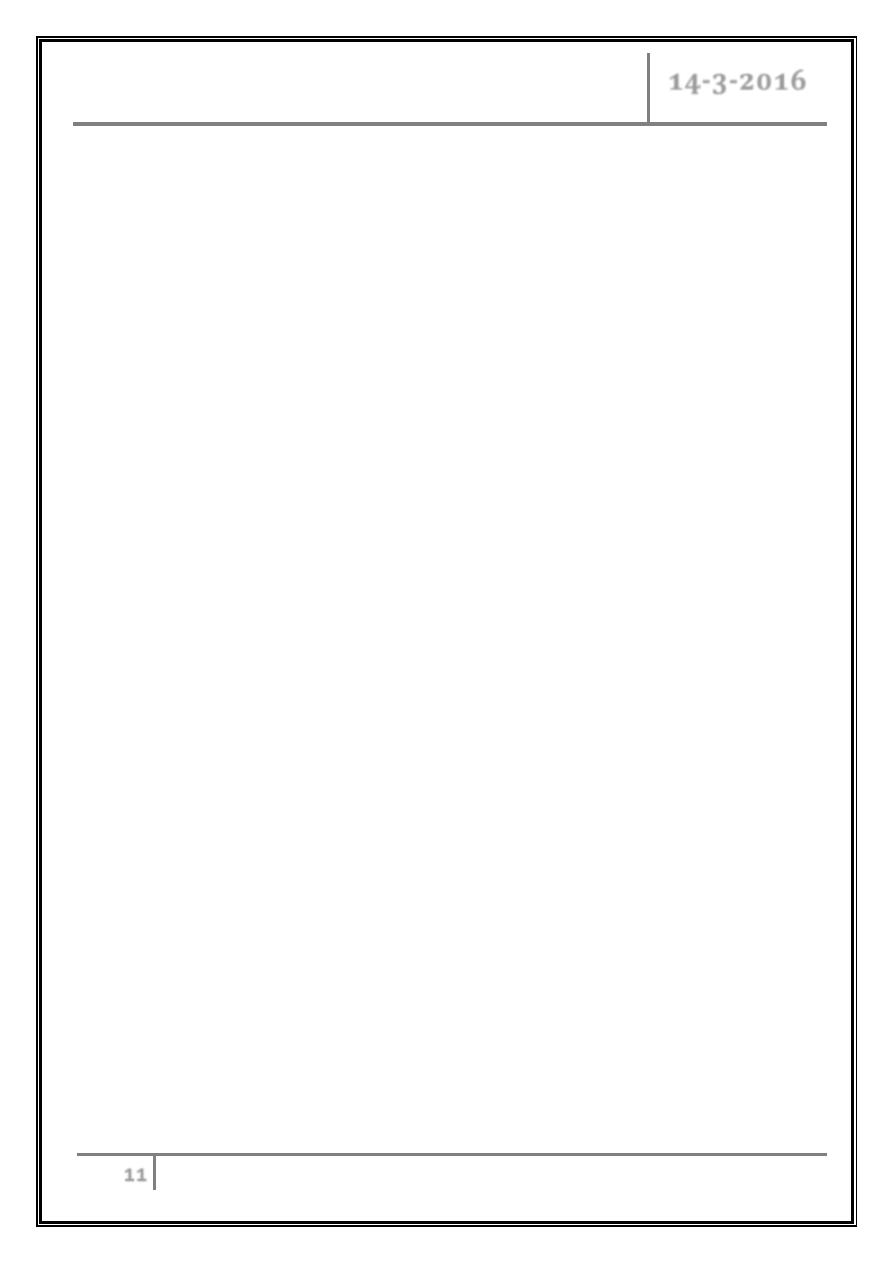
Adrenal gland Dr. Manal
14-3-2016
11
Respiratory system
Not bronchodilators.
Most potent and most effective anti-inflammatory.
Effects not seen immediately (delay 6 or more hrs).
Inhaled corticosteroids are used for long term control.
… End …
